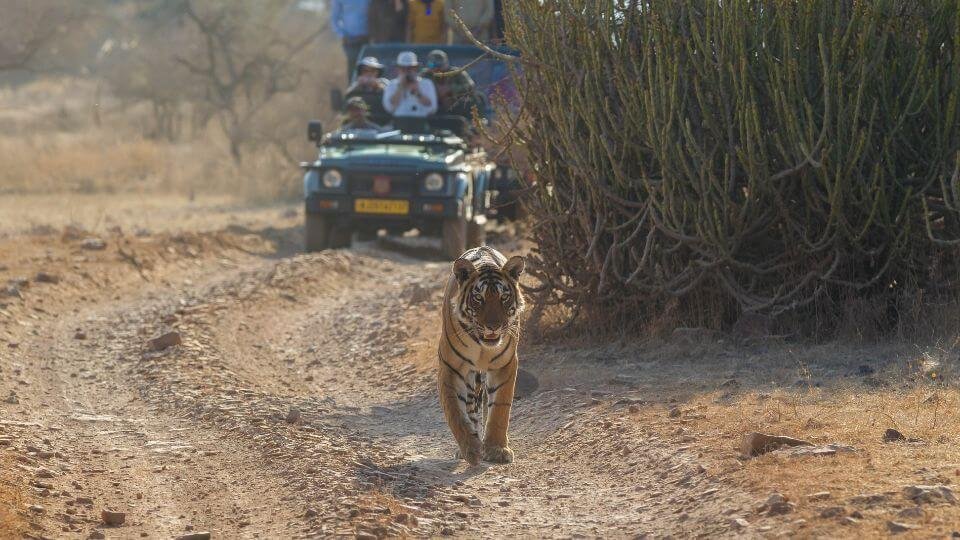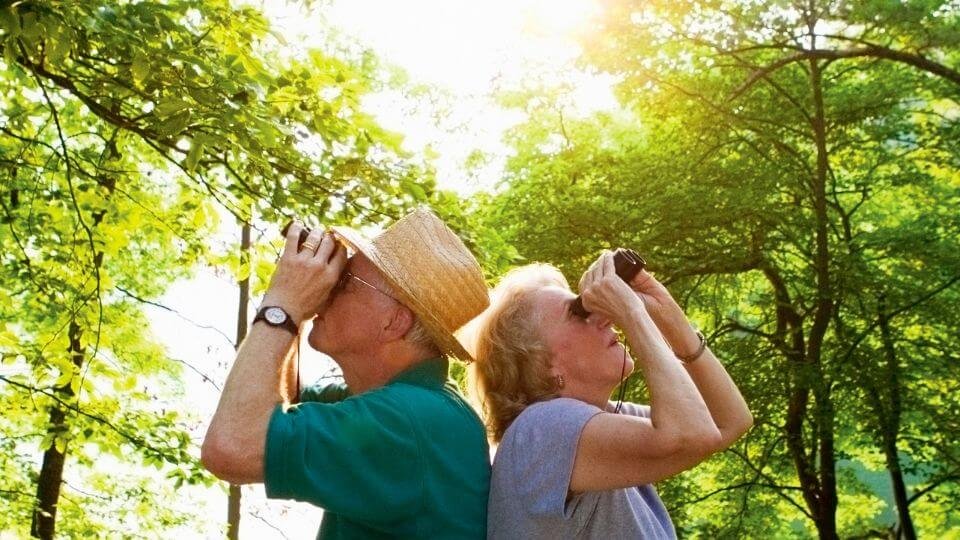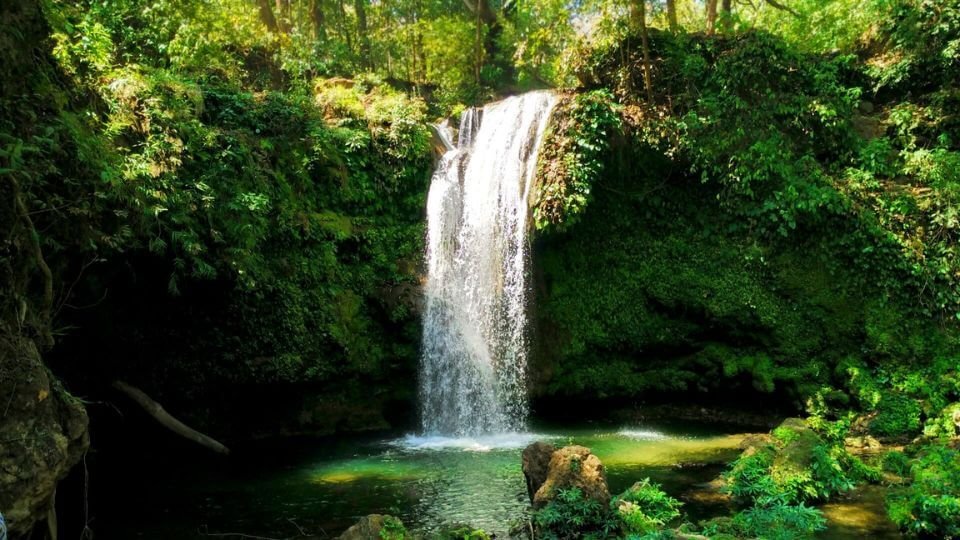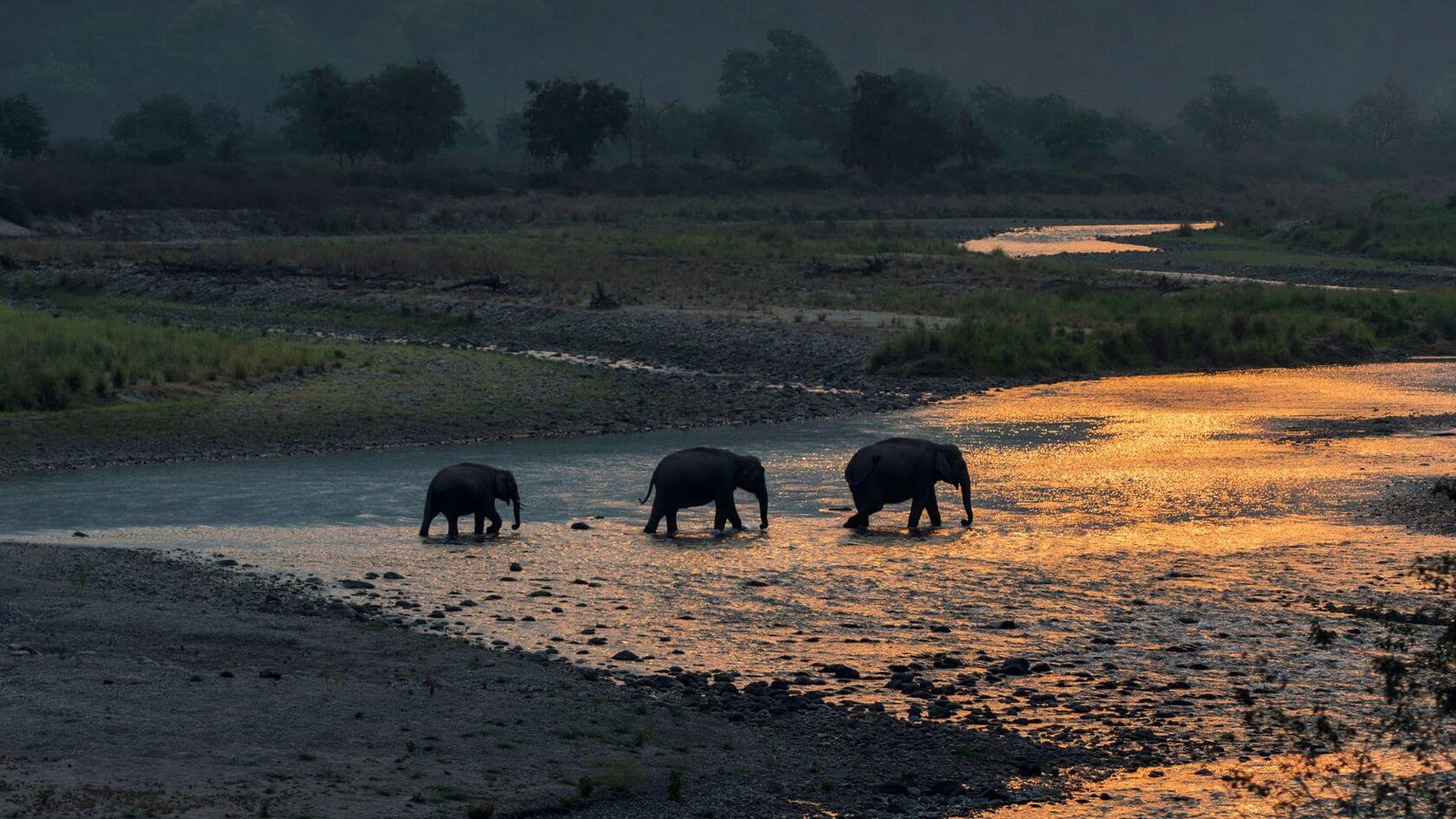Get the best deals on packages.
Corbett National Park, situated in the picturesque Nainital district of Uttarakhand, India, holds the distinction of being the country’s first national park, established in 1936.
Spanning an impressive area of approximately 520 square kilometres, the park is renowned for its rich biodiversity, varied landscapes, and a plethora of wildlife species, particularly the iconic Bengal tiger.
Top Attractions in Jim Corbett National Park You Can’t Miss
Wildlife Safaris

One of the foremost activities for visitors is embarking on wildlife safaris. Jeep and Canter safaris operated within designated zones of the park offer an exhilarating way to delve into the wilderness. As you traverse through the park’s grasslands, dense forests, and riverine belts, there are ample opportunities to spot diverse fauna, including elephants, leopards, various species of deer (such as the sambar and chital), and over 600 species of birds. The early morning and late afternoon are particularly fruitful times for sightings.
Corbett National Park is divided into several safari zones, each offering unique experiences and wildlife sightings.
Here are the main safari zones:
Dhikala Zone: This is the most popular zone, known for its diverse flora and fauna, including tigers, elephants, and various bird species. It offers stunning views of the Ramganga River and is accessible for overnight stays.
Bijrani Zone: Known for its rich wildlife and scenic beauty, Bijrani is favoured for jeep safaris. It’s an excellent spot for birdwatching and encounters with animals like deer and leopards.
Jhirna Zone: This zone is open year-round and offers a great opportunity to see various mammals and birds. The terrain here is varied, making it an interesting place for safaris.
Dhela Zone: A relatively newer zone, Dhela offers a unique experience with a less crowded atmosphere. It’s known for its rich biodiversity and is also suitable for both jeep and canter safaris.
Sonanadi Zone: Located on the periphery of the national park, this zone is less frequented by tourists, providing a more tranquil wildlife experience.
Khinnaur Zone: This zone is known for its beautiful landscapes and wildlife. Although not as popular, it’s great for those looking to explore less-trafficked areas. Each zone has its own distinct features and wildlife, making Corbett National Park a diverse and exciting destination for nature and wildlife enthusiasts. Remember to check for any regulations or guidelines before planning your safari.
Bird Watching

Corbett National Park is a haven for bird enthusiasts, with a rich avian population that attracts bird watchers from around the world. Species such as the Great Hornbill, Kingfishers, and various migratory birds can be observed, particularly during the winter months. Specialised bird-watching tours are available that cater to this passion, led by guides who are well-versed in ornithology.
Trekking and Nature Walks

For those seeking a more immersive experience with nature, trekking and guided nature walks are available. These excursions often take participants through picturesque trails that meander through the park’s hills and valleys, allowing for unique encounters with flora and fauna. Some popular trekking routes provide breathtaking views of the surrounding landscape and opportunities to learn about the local ecosystem.
Corbett Waterfall and Garjiya Devi Temple

Beyond wildlife, the park features beautiful sites like the Corbett Waterfall, ideal for a picnic or a refreshing dip. The nearby Garjiya Devi Temple, perched on a rock amid the Kosi River, attracts many visitors for its spiritual significance and scenic beauty, making it a perfect addition to a day trip.
Eco-Tourism Initiatives at Jim Corbett
Corbett National Park places a strong emphasis on eco-tourism and conservation. The park management implements sustainable practices aimed at protecting the environment while also benefiting local communities. Initiatives include working with local residents to promote responsible tourism and providing them with training in eco-friendly practices. This approach not only helps preserve the park but also generates employment opportunities and income for the communities surrounding the park.
When to Visit Jim Corbett National Park
The park is open to visitors from November to June, with the peak season typically from December to March. Winter months offer cooler temperatures and increased wildlife visibility. Visiting during the summer, particularly in May and early June, can also be rewarding as animals flock to water sources, making sightings more common. However, keep in mind that the park remains closed during the monsoon season (July to October) to protect wildlife and maintain trails.
What You Need to Know Before Visiting Jim Corbett National Park
Advance Booking: During peak tourist season, it’s essential to book safari slots in advance to secure a spot in the popular zones. Online bookings are available through the official park website and authorised travel agents.
Guided Tours: Engaging a knowledgeable guide enhances the safari experience. They can provide valuable insights into the park’s ecosystem, animal behaviour, and plant species, enriching your understanding of this unique environment.
Respect Nature: To preserve the delicate balance of the ecosystem, visitors are urged to adhere to park regulations. This includes maintaining a safe distance from animals, not littering, and refraining from feeding wildlife. Corbett National Park is not only a sanctuary for a diverse array of wildlife but also plays a critical role in the local economy through tourism. Its commitment to conservation and sustainable practices ensures that this ecological treasure will remain for future generations to explore and cherish.

